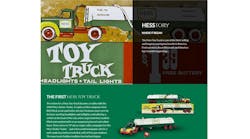I’ve been practicing lean for more than 20 years now, having been first exposed to it while at a Tier 1 automotive supplier in the late 90s. Back then, the concept of lean was still pretty new (at least it was for us), and it was such a far departure from our typical methods that many of us struggled with its concepts. I was lucky – I was the project engineer responsible for launching our content in the Toyota Camry automatic transmission when its production got duplicated from Japan to the Unites States (Buffalo, West Virginia, to be exact). As such, we were first in line to try this new “lean” approach.
One of the first things we tackled was our lengthy setups in the press department. We stamped out bearing components using large progressive die sets that took more than eight hours to set up and fine-tune in these giant Minster presses. Once we got them going, we could get a bearing component off the press about every second. For these reasons, we had nestled nicely into the “once it’s set up and running good, run the snot out of it” mentality. This made sense to me at the time… I’d bore witness to the major pain it was to set up a die set, so I could see why we’d want to run as much as we could. Gotta make hay while the sun shines!
As I learned more about lean, though, this practice started to make less and less sense. I began to wonder if there wasn’t a better way, so one Friday afternoon I traced a couple part numbers through all of our departments (stamping, heat treat, vibratory finishing, inspection and assembly), and was honestly surprised to see exactly how much inventory we had on hand (spoiler alert – it was a lot!). I forget the exact amount, but it was somewhere around four to six weeks’ worth of inventory in various states of being processed. Couple this with the fact that the individual process’ cycle times were all pretty short (even including the batch heat treat ovens), and it was right around then that the true purpose of lean started to come into focus to me. I remember wondering, “Why would we have a month and a half worth of a product that we could conceivably make in a few days?” After a few instances of purging our WIP because of some issue or problem we’d created (using an obsolete print, out-of-date process instructions, etc.) and not caught in time, I was sold. I can remember watching the black tubs we used to carry product in all getting emptied into the dumpsters out back and thinking, “This is so stupid. What a waste!”
Over the next year or so, we worked hard and got our eight-plus hour setups down to about an hour, which was a huge win for the organization. We could react to customer demand changes more quickly and easily, we carried a lot less inventory, and the people doing the setups had a much easier time doing so. During one conversation with a setup technician friend of mine, we were discussing the benefits of setup reduction. By this point, I was a full-on lean advocate and espoused its benefits at every opportunity. By contrast, he was mostly onboard, having taken part in much of the setup reduction activities we’d undertaken, but on this day he hit me with something I’d never thought about.
“I see the benefit of what we’ve done,” he said. “But it used to be that being a setup tech meant something. Now, pretty much anyone could do my job.” The true sadness he expressed was something I wasn’t ready for. Here was a guy who had worked hard, learned a whole slew of new skills and took a lot of pride in the work he did for the company. In his world, lean had actually taken something away from him, even if it was what was best for the overall organization.
In that situation today, we lean practitioners would likely make the case that making setups better/easier/faster was really his job, as opposed to just physically doing setups. Likewise, I could see myself “selling” the facts that he now could cross-train to do something else -- learn even more skills and continue to grow. Heck, maybe he could try something completely different within the organization. These are all valid points, of course, but so were his feelings. That’s a part of lean I think we miss (or at least marginalize), and that’s certainly not upholding Respect for People.
I believe one of the aspects of manufacturing that draws a certain kind of person to it is the notion of craftsmanship. For like-minded individuals, there is an inherent beauty in being someone who knows their craft well. As a mechanical engineer who likes working with his hands and building things, watching a true craftsman at work is like watching an artist. This was true for my setup tech friend as well. He took great pride in having specific knowledge and being able to apply it for the betterment of all involved. In short, he liked being the person who could solve problems. It gave him a sense of accomplishment, which is something I think we can all understand.
So, the question then becomes – does incorporating lean tools, techniques and methods also mean killing creativity and craftsmanship? For some, I fear that that is exactly what it means. For my friend, he perceived his value by being able to solve any problem that arose during a setup. What we did by incorporating lean was eliminate a lot of those problems from ever happening, and thus he had far fewer problems to solve. Not only were setups now easier, they were also more routine, which was further enforced through the incorporation of standard work. So not only did we take away some of the problem-solving he enjoyed, we had also taken his tribal knowledge, put it on paper and trained everyone on it. When stated that way, I can see why some folks resist the change that lean can bring.
All that being said, I think there’s a case to be made that lean actually supports craftsmanship and creativity. In “pre-lean” situations, folks can often be frustrated with the current state of affairs. Not being able to find what or who they need when they’re needed, dealing with processes that yield unreliable results which require reworks and re-dos -- all of these can contribute to bad attitudes, poor performance and (in worst-case scenarios), someone either quits or gets fired. As Deming said, “A bad process will beat a good person every time.”
Lean can liberate us from these types of situations. By standardizing what can and should be standardized, and by eliminating activities that provide no value, it frees up our minds to focus on other things -- like improvement ideas. I always found it difficult, if not impossible, to think about improving a process when all I was focused on was trying to get it done and out the door (or off my desk). It takes a certain amount of mental capacity and effort in order to take a step back and consider alternatives. That’s really hard to do when you’re in the thick of it. The phrase I use a lot with clients is, “Everyone is so focused on doing their job, they’re not thinking about how to do their job better.”
I think it’s an important aspect of Respect for People to reflect on these different viewpoints, and to really understand and appreciate the different perspectives that people have. Sometimes, resistance isn’t to lean, or to change; it’s really about the perceived loss of something that someone values. It’s up to us as lean leaders and practitioners to listen, and to ultimately help folks understand that although there may be certain aspects that are going away, the opportunities to do what they truly love and are truly good at are not.
Paul W. Critchley is president of New England Lean Consulting. He is co-author of “The Whole Professional, A Collection of Essays to Help You Achieve a Full and Satisfying Life”. He can be reached at https://newenglandleanconsulting.com/.




